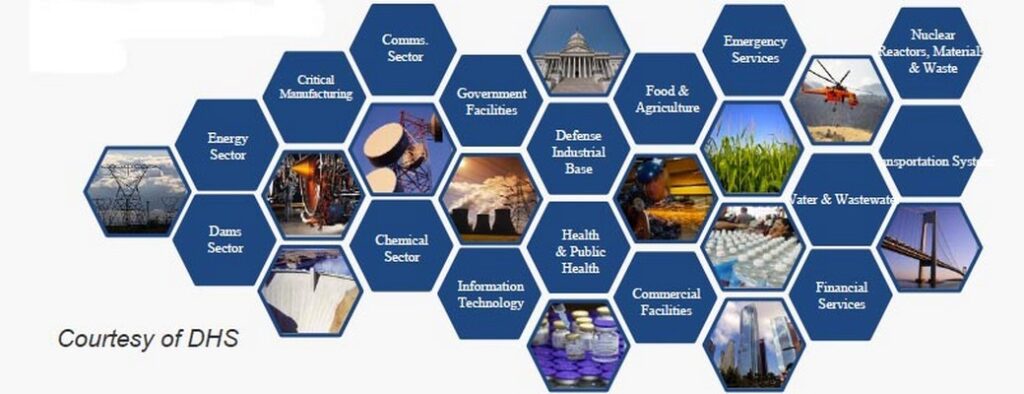In the vast tapestry of Canadian business, from the bustling streets of Toronto to the quiet corners of rural Saskatchewan, no company stands alone. We’re all connected, relying on a complex web of suppliers and partners to keep our operations humming. These are our vendors – the unsung heroes of our business world, but also potential weak links in our cybersecurity armor.
This isn’t a tale of fear, but one of awareness and empowerment. As a Canadian SMB owner, you need to understand the risks that come with these vital partnerships. So, let’s embark on a journey through the vendor landscape, exploring the threats they can inadvertently introduce, and charting a course to keep your business safe in the digital age.
The Vendor Spectrum: Who Are You Dealing With?
Vendors come in all shapes and sizes, each playing a crucial role in different sectors of our economy. Let’s break it down:
Healthcare

Picture a clinic in Calgary, nestled in the shadow of the Rocky Mountains. They rely on a host of vendors:
- Medical equipment suppliers providing everything from diagnostic tools to patient monitoring systems.
- Pharmaceutical distributors ensuring medications are delivered safely and on time.
- IT service providers managing electronic health records and patient data storage.
But with these partnerships comes risk, as the LifeLabs incident of 2019 starkly demonstrated. Imagine the shock when 15 million Canadians learned their medical test results had been compromised in a massive data breach. LifeLabs, Canada’s largest medical testing company, fell victim to a sophisticated ransomware attack, exposing names, addresses, health card numbers, and even lab test results to cybercriminals.
This breach sent shockwaves through the healthcare community, serving as a wake-up call about the vulnerabilities in our healthcare system. It’s not just about protecting patient privacy; it’s about maintaining the trust that forms the foundation of effective healthcare.
Financial Industry

Now, let’s shift our focus to a credit union in Saskatoon, managing the financial dreams of prairie farmers and city dwellers alike. They depend on vendors like:
- Payment processing companies handling the flow of money.
- Financial software vendors providing tools for accounting and loan management.
- Compliance and regulatory service providers helping navigate Canada’s complex financial regulations.
The financial sector’s vulnerability was highlighted in early 2024 when Moneris, a joint venture of the Royal Bank of Canada and Bank of Montreal, found itself in the crosshairs of the notorious Medusa ransomware gang. The cybercriminals claimed to have breached Moneris’s defenses and threatened to release sensitive data unless a $6 million ransom was paid.
In a display of digital heroism, Moneris’s cybersecurity team managed to thwart the attack, preventing access to critical data. This close call served as a stark reminder that in the world of finance, where trust is currency, cybersecurity isn’t just about protecting data – it’s about safeguarding the very foundations of our economic system.
Education

Think of a bustling school in Montreal, where the future of Quebec is being shaped. They rely on:
- Educational technology vendors providing learning management systems and online testing platforms.
- Textbook publishers and suppliers handling sensitive student information for billing and shipping.
- Facility management service providers with access to physical premises and IT infrastructure.
The education sector has been grappling with increasing cybersecurity challenges. Imagine being a student or parent, logging into your school’s learning management system to check grades or submit an assignment, only to be met with an error message. The system is down, and there are whispers of a data breach. Your personal information, academic records, and perhaps even financial data could be in the hands of cybercriminals.
This scenario has played out in various forms across Canadian schools and universities, with the shift to online learning during the COVID-19 pandemic amplifying these vulnerabilities.
Retail

Consider a vibrant boutique in Toronto’s trendy Queen West, showcasing the best of Canadian fashion. They depend on:
- Product manufacturers and wholesalers supplying inventory.
- Logistics and shipping companies handling goods and customer data.
- Marketing and advertising agencies accessing customer data and marketing channels.
Picture yourself as a shopper in a bustling mall in Vancouver, making a purchase, swiping your credit card without a second thought. Little do you know, the point-of-sale system you’re using has been compromised, silently siphoning off your financial information.
Infrastructure

Imagine a utility company maintaining essential services in Edmonton, keeping the lights on through harsh Alberta winters. They rely on:
- Construction material suppliers providing the building blocks of infrastructure.
- Engineering and consulting firms designing and maintaining critical systems.
- Utility service providers and subcontractors with access to vital networks.
The threat to critical infrastructure is very real. The Canadian Centre for Cyber Security has warned that over the next two years, Canada’s critical infrastructure will “almost certainly” continue to be targeted by cybercriminals.
The Dark Side: Vendor-Related Cyber Threats
Now that we’ve identified the players, let’s explore the threats they can bring to your doorstep. It’s not a pretty picture, but it’s essential to understand the risks:
- Data Breaches: As we saw with LifeLabs, vendors often have access to your most sensitive data. A breach in their system can expose this information, leading to financial losses, reputational damage, and legal liabilities.
- Ransomware Attacks: The Moneris incident, though thwarted, highlights how vendors can be gateways for ransomware. If a vendor’s system is infected, it can spread to your network, encrypting your data and demanding a ransom.
- Supply Chain Attacks: This is a particularly insidious type of attack, where attackers target vendors to gain access to their customers’ systems. By compromising a single vendor, they can potentially compromise hundreds or even thousands of businesses.
Building Your Defenses: Protecting Against Vendor-Related Threats

So, how do you protect your business from these vendor-related cyber threats? Here’s a practical guide:
- Know Your Vendors: Create a comprehensive inventory of all your vendors, including their contact information, the services they provide, and the data they have access to.
- Risk Assessment is Key: Before engaging with a vendor, conduct a thorough risk assessment to identify potential cybersecurity vulnerabilities.
- Contractual Clarity: Your contracts with vendors should clearly outline their cybersecurity responsibilities.
- Regular Audits: Conduct regular audits of your vendors’ security practices to ensure they’re meeting their contractual obligations.
- Implement MFA and Encryption: Ensure your vendors use multi-factor authentication (MFA) for all accounts and encrypt sensitive data both in transit and at rest.
- Continuous Monitoring: Implement security tools and processes to continuously monitor vendor activity for suspicious behavior.
- Incident Response Plan: Develop a comprehensive incident response plan that outlines how you’ll respond to a vendor-related cybersecurity incident.
- Training and Awareness: Educate your employees about the risks of vendor-related cyber threats and train them on how to identify and report suspicious activity.
A Proactive Approach to Vendor Security
The vendor landscape is complex and ever-changing, but with the right knowledge and a proactive approach, you can significantly reduce your risk. Don’t wait for a vendor-related breach to disrupt your business. Take action now to assess your vulnerabilities, implement security measures, and protect your valuable assets.
Remember, your vendors are an extension of your business. By holding them to high cybersecurity standards, you’re not just protecting yourself; you’re protecting your customers, your reputation, and the entire Canadian business community. In the digital age, a chain is only as strong as its weakest link – make sure your vendors are up to the challenge.
As we’ve seen from the LifeLabs breach to the Moneris close call, the threats are real, but so is our capacity to learn, adapt, and overcome. By staying vigilant and proactive, we can ensure that the story of Canadian business in the digital age is one of resilience, innovation, and success.
At Adaptive Office Solutions, cybersecurity is our specialty. We prevent cybercrimes by using analysis, forensics, and reverse engineering to detect malware attempts and patch vulnerability issues. By investing in multilayered cybersecurity, you can leverage our expertise to boost your defenses, mitigate risks, and protect your data with next-generation IT security solutions.
Every device connecting to the internet poses a cyber security threat, including that innocent-looking smartwatch you’re wearing. Adaptive’s wide range of experience and tools fills the gaps in your business’s IT infrastructure and dramatically increases the effectiveness of your cybersecurity posture.
To schedule a Cyber Security Risk Review, call the Adaptive Office Solutions’ hotline at 506-624-9480 or email us at helpdesk@adaptiveoffice.ca

